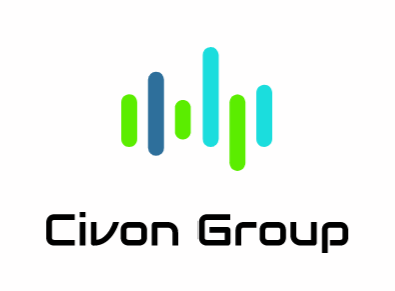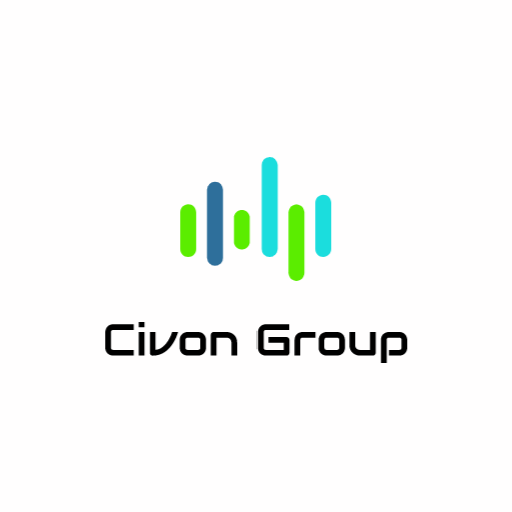Introduction: The New Era of Employee Experience

“Organizations with highly engaged employees experience up to 23% greater profitability!” This striking statistic highlights why modern businesses must invest in an employee experience platform. At The Civon Group, we believe that a well-integrated digital solution is key to nurturing a positive, productive, and connected workplace. In this guide, I will share everything you need to know—from essential features to actionable strategies—that will transform your organization’s employee journey.
What Is an Employee Experience Platform?
An employee experience platform is a centralized digital hub designed to streamline every stage of an employee’s lifecycle. From recruitment and onboarding to daily operations, professional development, and eventual offboarding, the platform consolidates all tools, resources, and communications into one unified system. This single source of truth minimizes the friction of juggling multiple applications and creates a more cohesive work environment.
Key Benefits
- Centralized Resources: All critical information—from HR policies to performance reviews—is housed in one easily accessible location.
- Enhanced Collaboration: The platform fosters seamless communication and collaboration, even among remote teams.
- Data-Driven Decisions: Continuous feedback collection and robust analytics empower leaders to make informed, strategic decisions.
Core Features of an Effective Employee Experience Platform
A modern employee experience platform combines technology with thoughtful design to improve workplace satisfaction and productivity. Below are the key components that drive its success.
1. Personalized Communication Channels
An effective platform must offer dynamic, media-rich communication tools. This goes beyond simple email exchanges—it includes personalized news feeds, company forums, and interactive dashboards that ensure every employee feels connected.
Actionable Tip:
Schedule regular town hall meetings and leverage interactive dashboards to keep everyone in the loop. Consider integrating Internal Communication Software that centralizes all messages in one place.
2. Seamless HR Process Integration
Integrating various HR functions—such as recruitment, onboarding, performance reviews, and offboarding—is critical. The platform should enable smooth HR Process Integration, reducing manual tasks and streamlining workflows.
Actionable Tip:
Map your current HR workflows and identify process gaps. Implement integrations that automate repetitive tasks, ensuring consistency and reducing errors across the board.
3. Capturing Real-Time Employee Feedback
Understanding employee sentiment is the cornerstone of continuous improvement. The platform should incorporate robust Employee Feedback Tools that facilitate surveys, polls, and pulse checks to gather actionable insights.
Actionable Tip:
Launch quarterly pulse surveys and encourage anonymous feedback to identify areas for improvement and to celebrate successes.
4. Optimized Onboarding Experience
A smooth start is essential for setting the tone. An integrated module of Employee Onboarding Software ensures that new hires are welcomed effectively, receive the necessary training, and quickly integrate into the company culture.
Actionable Tip:
Develop a comprehensive onboarding checklist and assign a dedicated mentor to every new hire. This approach accelerates their adjustment and fosters early engagement.
5. Streamlined Performance Management
Centralizing performance management drives continuous improvement. Incorporate Performance Management Software to unify goal setting, regular feedback, and performance reviews into one accessible system.
Actionable Tip:
Set clear, measurable objectives and schedule regular check-ins. Use the platform to provide constructive feedback that aligns with both individual growth and company objectives.
6. Creating a Collaborative Digital Workspace
Modern work demands flexibility. A robust Digital Workplace Platform integrates essential business apps and facilitates collaboration regardless of location, whether employees are in-office or remote.
Actionable Tip:
Ensure that your digital workspace supports mobile access and integrates with productivity tools like Google Workspace and Microsoft 365. This ensures that employees can work efficiently from any device.
7. Enhancing Employee Engagement
Investing in an Employee Engagement Platform is crucial for driving motivation. Although this term is used interchangeably at times, in our view, it refers specifically to systems designed to deepen emotional commitment and build community within your organization.
Actionable Tip:
Incorporate features that allow for regular feedback, team celebrations, and interactive Q&A sessions with leadership. Engagement shouldn’t be left to chance; it must be nurtured actively.
8. Implementing Employee Retention Strategies
Long-term success depends on retaining top talent. Implementing well-thought-out Employee Retention Strategies within your platform helps track and improve retention by addressing potential issues before they lead to turnover.
Actionable Tip:
Create a rewards and recognition program and monitor turnover data. Use insights from the platform to adjust policies and create an environment where employees feel valued and inclined to stay.
Additional Reading: Employee Development
9. Automating Routine HR Tasks
Efficiency is paramount. Leveraging HR Automation Solutions minimizes the time spent on routine tasks, such as scheduling, approvals, and document management, thereby freeing up valuable HR resources for more strategic initiatives.
Actionable Tip:
Identify repetitive tasks in your HR processes and configure automation workflows within your platform. This not only boosts productivity but also reduces the likelihood of human error.
10. Cultivating a Culture of Recognition
Recognition is a powerful driver of employee satisfaction. An integrated Employee Recognition System allows you to celebrate individual and team achievements, fostering a culture of appreciation.
Actionable Tip:
Launch regular peer-to-peer recognition campaigns. Encourage employees to acknowledge one another’s contributions and create a public recognition wall to highlight successes.
Additional Reading: The Importance of Employee Recognition
Real-World Examples & Case Studies
Understanding theory is essential, but real-world application is where you see true value. Let’s look at a few case studies that highlight the transformative impact of an employee experience platform.
Case Study: Enhancing Onboarding Efficiency
One large enterprise implemented an employee experience platform to centralize its onboarding process. By integrating Employee Onboarding Software into a unified dashboard, they reduced the onboarding time by 30%. New hires were able to access necessary resources immediately, leading to faster integration and improved early productivity.
Case Study: Driving Engagement Through Continuous Feedback
A mid-sized tech firm deployed Employee Feedback Tools to gather real-time insights. With regular pulse surveys and feedback loops, managers were able to pinpoint issues quickly and address them before they escalated. This resulted in a 20% increase in employee satisfaction and a noticeable reduction in turnover.
Case Study: Streamlining IT Support
Using a solution like Jira Service Management, which extends its capabilities to cover internal HR and IT support, one company saw dramatic improvements in its service delivery. Employees could submit requests via familiar channels like Slack or email, and the automated routing ensured rapid resolution. The data collected allowed the IT and HR teams to continuously refine their processes.
Measuring the Impact of Your Employee Experience Platform
Implementing an employee experience platform is just the beginning. Measuring its effectiveness is crucial to ensure continuous improvement.
Key Metrics to Track
- Employee Satisfaction Scores: Regular surveys can help gauge overall contentment.
- Onboarding Completion Rates: Monitor how quickly and efficiently new hires complete their onboarding process.
- Performance Improvement: Use data from performance reviews to assess whether employees are meeting their goals.
- Turnover Rates: A decrease in turnover is a direct indicator of enhanced employee retention.
- Feedback Participation: Track the frequency and quality of employee feedback.
Actionable Tip:
Establish a baseline for these metrics before platform implementation and review them periodically to measure progress and adjust strategies as needed.
Future Trends in Employee Experience Platforms
The landscape of employee experience is evolving rapidly. Here are some trends to watch:
Embracing AI and Machine Learning
Future platforms will increasingly incorporate AI to provide personalized experiences. Imagine a system that not only gathers feedback but also predicts potential issues before they occur! This proactive approach will further refine engagement and retention strategies.
Enhanced Mobile Experiences
As remote and hybrid work continue to rise, mobile-first designs will become even more critical. The emphasis will be on seamless mobile access, ensuring that every employee, regardless of location, can tap into the platform’s full capabilities.
Greater Integration and Customization
Companies will demand even more robust integration with various enterprise tools. Customization will also be a key focus, allowing organizations to tailor the platform’s interface and functionalities to their unique culture and workflows.
Overcoming Implementation Challenges
Deploying an employee experience platform is a significant undertaking. Here are some common challenges and strategies to overcome them:
Resistance to Change
Employees may initially resist adopting a new system. Clear communication about the benefits and comprehensive training programs can help ease the transition.
Actionable Tip:
Run pilot programs with smaller teams first. Use their feedback to refine the rollout process and create internal champions who advocate for the platform.
Integration Complexities
Integrating with existing HR and productivity tools can be technically challenging. Prioritize platforms that offer robust integration support and consult with IT experts during the implementation phase.
Actionable Tip:
Prepare a detailed integration plan and schedule regular check-ins with both your IT and HR teams to ensure smooth adoption.
Data Security Concerns
With the centralization of sensitive employee data, security is paramount. Choose a platform that adheres to industry-standard security protocols and offers comprehensive vendor support.
Actionable Tip:
Conduct a thorough security audit and ensure that the chosen platform meets all your organization’s compliance requirements.
Conclusion: Transforming Your Workforce
In today’s competitive talent market, an employee experience platform is more than just a tool—it’s a strategic investment in your company’s future. By bridging communication gaps, automating routine tasks, and integrating essential HR processes, these platforms create an environment where employees feel valued, informed, and empowered to perform at their best.
At The Civon Group, we believe that the benefits are clear:
- Boosted Productivity: Streamlined processes mean less time spent toggling between systems and more time on impactful work.
- Enhanced Engagement: Regular feedback and personalized communication keep employees motivated and connected.
- Improved Retention: A positive work environment directly correlates with lower turnover, saving both time and resources.
By embracing this comprehensive solution, you set the stage for sustained success. The future of work is digital, integrated, and centered on the employee experience. As you move forward, remember that investing in your employees’ journey is investing in your company’s success.
Final Thoughts:
If you’re looking to revolutionize your workplace, now is the time to act. Implementing an employee experience platform can transform your organization—boosting engagement, streamlining processes, and ultimately driving growth. Don’t settle for fragmented systems when you can have a unified solution that supports your workforce at every step.
Remember, your employees are your greatest asset. When they are empowered, informed, and engaged, your business will flourish. Let’s build a future where work is not just a necessity but a fulfilling journey!


Recent Comments